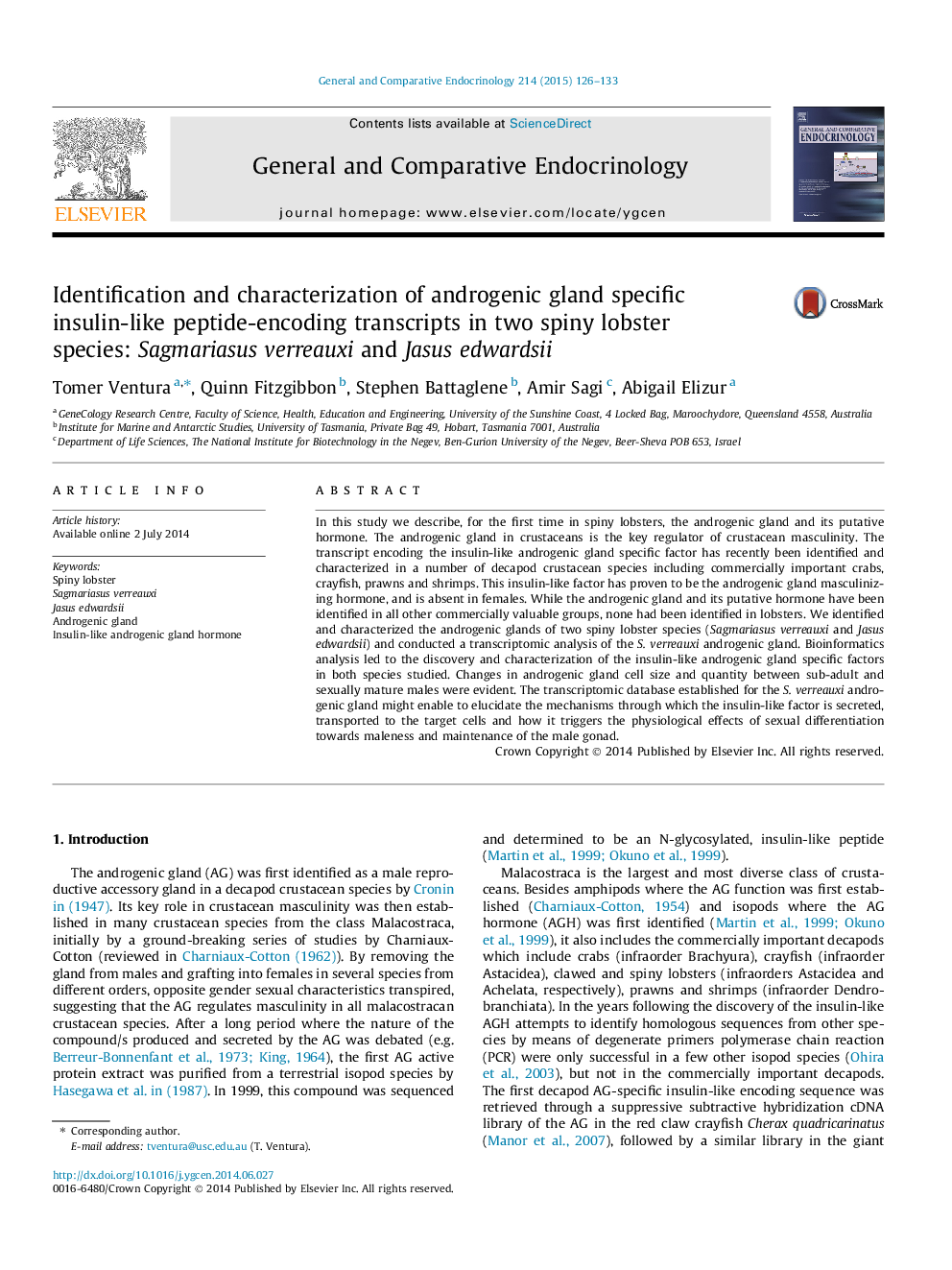| Article ID | Journal | Published Year | Pages | File Type |
|---|---|---|---|---|
| 2799984 | General and Comparative Endocrinology | 2015 | 8 Pages |
•The androgenic gland of spiny lobsters was characterized for the first time.•The androgenic gland cells change markedly throughout development.•The androgenic gland hormone and it’s encoding transcript was identified in two spiny lobster species.
In this study we describe, for the first time in spiny lobsters, the androgenic gland and its putative hormone. The androgenic gland in crustaceans is the key regulator of crustacean masculinity. The transcript encoding the insulin-like androgenic gland specific factor has recently been identified and characterized in a number of decapod crustacean species including commercially important crabs, crayfish, prawns and shrimps. This insulin-like factor has proven to be the androgenic gland masculinizing hormone, and is absent in females. While the androgenic gland and its putative hormone have been identified in all other commercially valuable groups, none had been identified in lobsters. We identified and characterized the androgenic glands of two spiny lobster species (Sagmariasus verreauxi and Jasus edwardsii) and conducted a transcriptomic analysis of the S. verreauxi androgenic gland. Bioinformatics analysis led to the discovery and characterization of the insulin-like androgenic gland specific factors in both species studied. Changes in androgenic gland cell size and quantity between sub-adult and sexually mature males were evident. The transcriptomic database established for the S. verreauxi androgenic gland might enable to elucidate the mechanisms through which the insulin-like factor is secreted, transported to the target cells and how it triggers the physiological effects of sexual differentiation towards maleness and maintenance of the male gonad.
